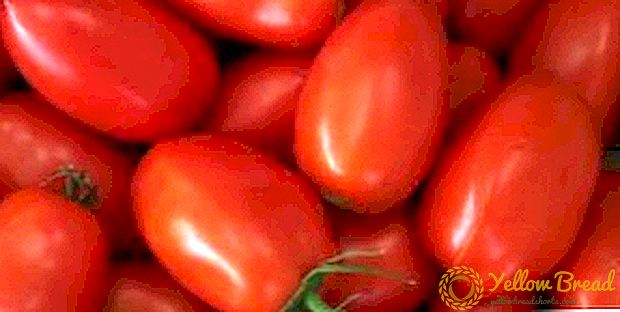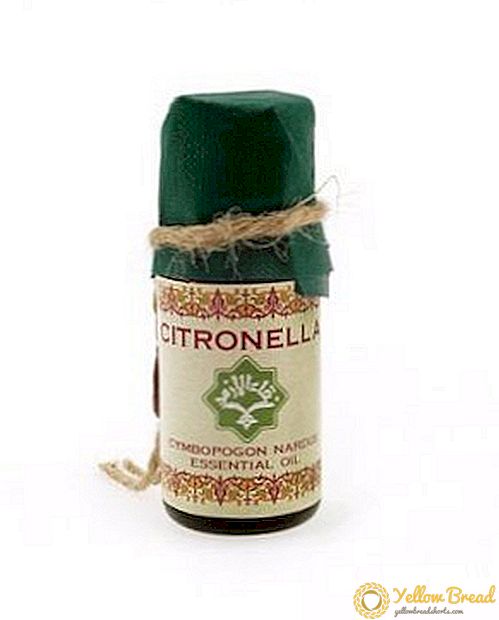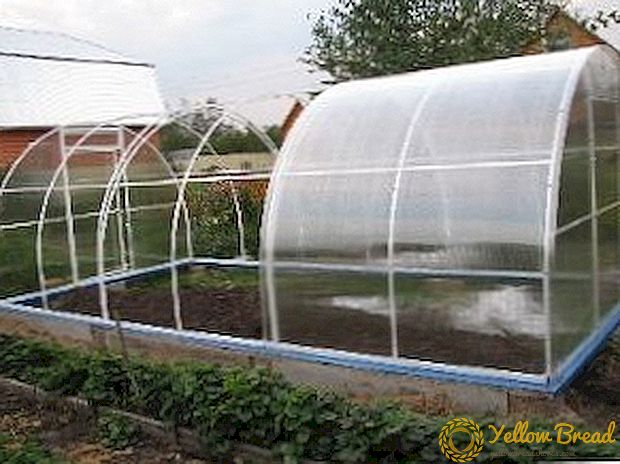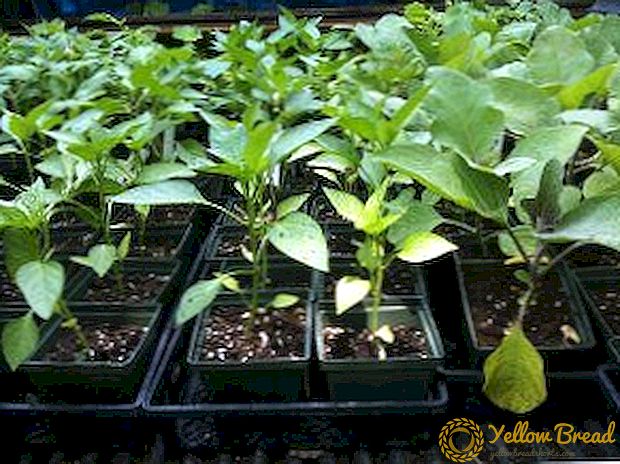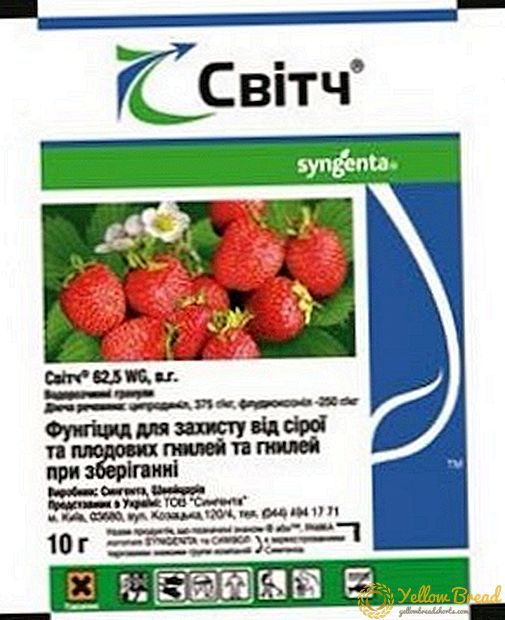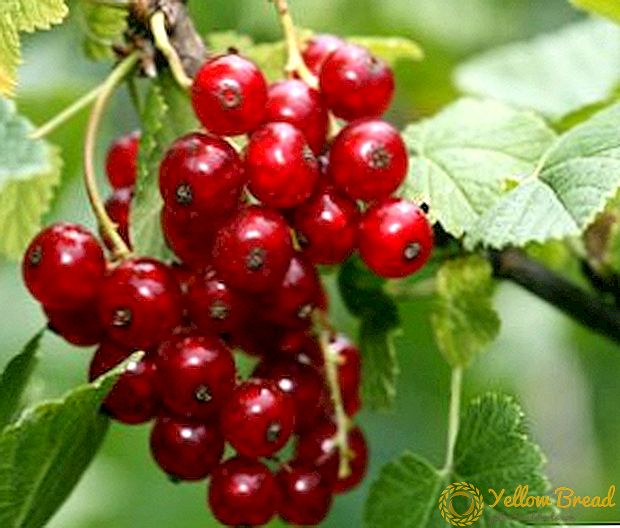 Small clusters with transparent sourish red currant berries in our area are not unusual. They can be found in almost every yard. And all because these unpretentious shrubs have the healing power of a whole complex of vitamins and minerals. Even our ancestors called their scarlet fruits a source of beauty, strength and longevity. Contemporaries also believe in medicinal properties of the plant. What is useful red currant, who is shown, and how to be treated with it - this will be discussed further.
Small clusters with transparent sourish red currant berries in our area are not unusual. They can be found in almost every yard. And all because these unpretentious shrubs have the healing power of a whole complex of vitamins and minerals. Even our ancestors called their scarlet fruits a source of beauty, strength and longevity. Contemporaries also believe in medicinal properties of the plant. What is useful red currant, who is shown, and how to be treated with it - this will be discussed further.
- Calorie, Vitamins and Minerals
- Useful properties of red currant
- special instructions
- During pregnancy
- With diabetes
- Pancreatitis
- Use in traditional medicine and cosmetology
- Preparation for the winter
- Harm and contraindications
Calorie, Vitamins and Minerals
Many people believe that red currant in comparison with black loses in terms of the number of components of vitamins and organic acids. In fact, the chemical composition of both berries is very rich and diverse, but not identical.In scarlet berries less ascorbic acid, but at times more than necessary for the formation of blood and support the functioning of iron vessels, as well as potassium, without which full operation of the cardiovascular system is not possible. The concentration of iodine with purple fruits of currant can be compared only with persimmon and feijoa. And now, in order, let's examine what vitamins are in red currants and in what quantities. 
If you analyze composition of 100 g of berries, then the picture will look like this:
Vitamins
- A - 33 μg;
- beta carotene - 0.2 mg;
- B1 - 0.01 mg;
- B2 - 0.03 mg;
- B5 - 0.06 mg;
- B6 - 0.14 mg;
- B9 - 3 μg;
- C - 25 mg;
- E - 0.5 mg;
- H - 2.5 µg;
- PP 0.3 mg;
- Niacin - 0.2 mg.
- potassium - 275 mcg;
- calcium - 36 mg;
- phosphorus - 33 mg;
- sodium, 21 mg;
- magnesium - 17 mg;
- mono - and disaccharides - 7.7 g;
- iron - 0.9 mg;
- saturated fatty acids - 0.1 g.

Also found in the berries:
- water (85 g);
- dietary fiber (3.4 g);
- organic acids (2.5 g);
- ash (0.6 g);
- carbohydrate (7.7 g);
- proteins (0.6 g);
- fats (0.2 g).
Useful properties of red currant

Due to the rich composition of red currants, not only berries are used in medical practice, but the foliage and shrub stalks are also used. Regular eating of fruits contributes to the synthesis of proteins, improves the functioning of the gastrointestinal tract, provides the body with essential substances, reducing the risk of anemia and hypovitaminosis. In addition, the berries have a beneficial effect on hormones, have antibacterial and antipyretic properties. The potassium and iron present in them prevent the malfunction of the cardiovascular system, reduce the level of cholesterol in the blood, dilute it and strengthen the arteries.
People who have a currant in their daily diet are less likely to suffer from oncological diseases, since the antioxidant components at the cellular level inhibit the development of malignant tumors.Moreover, the berries are recommended for prophylactic purposes to prevent osteoporosis, stroke, alopecia, puffiness, epileptic seizures, as well as to support the immune functions of the body.

With berries, we figured out, move on to leaves and bones of red currants, which require more detailed analysis to determine their benefit and harm to humans. It has been scientifically proven that a huge amount of tannins, essential oils and ascorbic acid are concentrated in the leaf plates of the shrub. This explains the pronounced effect in the treatment of cystitis; also currant leaves improve appetite, help cleanse the blood and tissue fibers from toxins. Many housewives add them to home canned food and pickles, not only as a fragrant spice, but also as a remedy.
Some cooks remove numerous currant bones during the preparation of jams and pastes because they negatively affect the taste and homogeneity of these sweets. but Bones are also suitable for use: they are pressed and receive the most valuable yellow-currant oil with a pleasant smell and a rare combination of polyunsaturated acids. The tool is recommended for diabetics, as well as for skin diseases and for cosmetic purposes.
special instructions
For the use of currant no age and sexual restrictions. Even eight-month-old babies are recommended homogenized purees from this product. Athletes and the elderly will help the fruit recover, men will return the health of the genitals, and women will be young. But in this regard, there are some features. 
During pregnancy
It is important that these berries are present in the daily diet of expectant mothers. According to experts, the product is quite able to provide the body with the daily rate of a number of vitamins and trace elements. In addition, for pregnant women it is important to normalize blood circulation and the state of the arteries, the well-functioning work of the intestine. Berries also help eliminate swelling in the legs and solve the problems of toxicosis. In addition, the tool is effective in the treatment of colds without the use of chemical drugs.
With diabetes
The presence of pectins and fructose in the composition of red currant fruit provides a beneficial effect on diabetics. Moreover, they can eat berries either in raw or in canned, frozen and dried form, but in limited quantities. The product is a storehouse of substances necessary for the proper functioning of the body. 
Teas and decoctions of buds and foliage of shrubs have a tonic, diuretic, antibacterial, diaphoretic and tonic effect. Moreover, in the process of eating currant activates the activity of the gastrointestinal tract, which is important in the treatment of various complications of diabetes. Usually, doctors allow the consumption of red currant in type 1 and 2 diabetes, but in each individual case, it is important to consult a qualified specialist.
Pancreatitis
In cases of acute pancreatitis, sour berries do more harm than good to the patient. This happens because of the contained malic, ascorbic and succinic acids, which irritate the walls of the pancreas, causing it to self-digest. In addition, purple fruits produce a choleretic effect, which increases the aggression of enzymes. And fiber contributes to diarrhea, the formation of gas and pain in the intestines. Based on this, doctors allow you to include small portions of berries in the remission phase of pancreatitis.
Use in traditional medicine and cosmetology
Healing properties of currant bushes were appreciated by official medicine and folk healers. In their arsenal, many recipes using the fruits, buds and leaves of this plant. For example, in case of hypovitaminosis, it is possible to improve the patient's condition with the help of fresh berries rubbed with sugar or infusion of leaves. By the way, the raw materials for this can be obtained not only in your garden, but also in the pharmacy. 2 tablespoons of leaves is poured with a glass of boiling water and steamed for about 15 minutes, taking 80 g one time for 5 days.
To achieve a diuretic effect of red currant can brew 20 g of leaves (dried or fresh) with boiling water and insisting until it cools completely: 2 tablespoons three times a day is enough for the desired result.
Atherosclerosis and malfunctions in the blood circulation in traditional medicine are treated with the help of tinctures from dried branches and fruits. Nausea and inflammatory processes in the gastrointestinal tract are eliminated with fresh juice. It is also prescribed in case of colds to relieve fever and disinfect the oral cavity. For severe sore throats, gargle the juice and use it as an expectorant.
 Women use currants not only for treatment, but also for cosmetic purposes. The unique combination of a vitamin complex has an amazing effect on the skin, nails and hair. Probably because the red currant berries in the legends are associated with female beauty and youth.
Women use currants not only for treatment, but also for cosmetic purposes. The unique combination of a vitamin complex has an amazing effect on the skin, nails and hair. Probably because the red currant berries in the legends are associated with female beauty and youth.
Preparation for the winter

Healing raw materials can be stored in different forms. Leaves, branches and bunches are dried. The berries are frozen or processed into juices, compotes, jams, marshmallow, jelly, jam and other sweets. But the longer the heat treatment lasts, the more the beneficial substances evaporate.
Currant compotes are very effective for colds. In the form of heat, they stimulate the immune functions of the body, and in the cold - tone it up, quench thirst. In addition, such blanks can be stored for a long time, aided by the inherent acid in the composition.
Berry fruit drinks have a choleretic effect, help cleanse the body of excess salts and fluids. Particularly relevant is the preparation of people suffering from gallstone disease and renal dysfunction. 
Currant jam loved by children, as well as jams are often used to speed up recovery from colds, sore throats, viral infections. A child and an adult who eat a tablespoon of such delicacy every day are less likely to get sick. Such conservation is simply necessary in any home, as it strengthens the body's defenses and contributes to the rapid recovery after suffering ailments.
Many housewives, so as not to bring the therapeutic berry to over-cooking, dry the fruit. Then they are added to tea, used for baking and eaten dry. In a similar product, as mentioned above, the calorie content increases, but the ability to remove radionuclides and cleanse the body of heavy metals and toxic substances remains. 
Other gardeners share their experience in canning red currant juice. It is easy to get it, because the fruit has thin skin and juicy pulp, then the juice is pasteurized, poured into jars and rolled up with lids. Such preparation in the winter can be used as a source of vitamins and as a medicine, as well as an additive to cosmetics.
To freeze the berries, they are pre-washed, thrown into a colander and packed in plastic bags or plastic containers, then immersed in freezers. Such a billet has a lower loss of vitamins and minerals than, for example, jam.It can be used for baking, making tea, compote and other desserts. Some mothers prepare currant sugar with sugar on their children and freeze it, and in winter they offer sorbet to small sweet teeth.
Harm and contraindications

Do not take the red fruit with a sour taste as a panacea. Of course, they have a tremendous impact on the human body and help to solve many health problems. In addition, do not cause allergic reactions. But it is acid that generates a number of contraindications. After all, every human body is special, and at the slightest failure without the advice of a specialist currants can do harm instead of the desired good. Refrain from eating, it would seem, a useful delicacy costs people who have increased acidity of the stomach, acute forms of gastritis, pancreatitis, ulcers, hepatitis, poor blood clotting, hemophilia.
Be healthy! Let red currant berries be useful for you. replenishing the body with vitamins, microelements and beauty.

